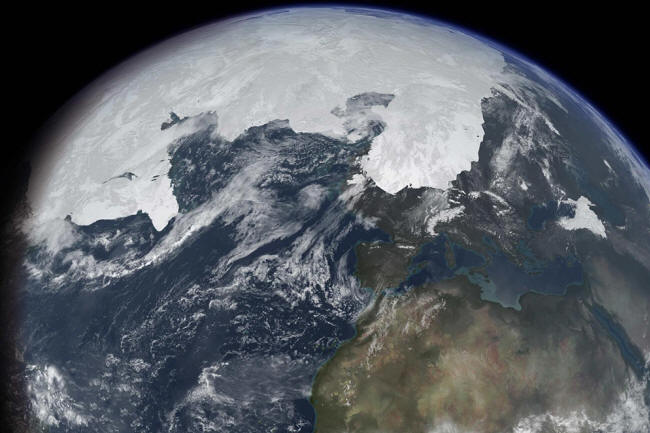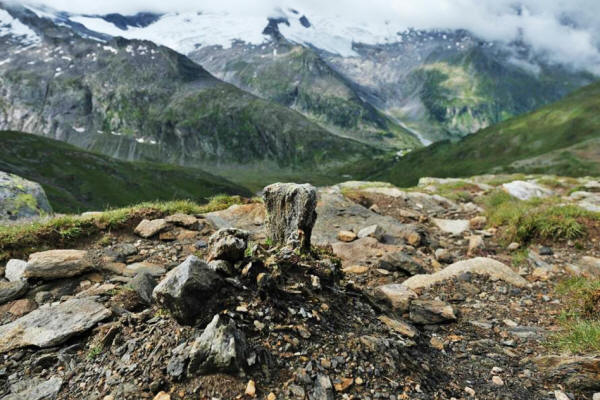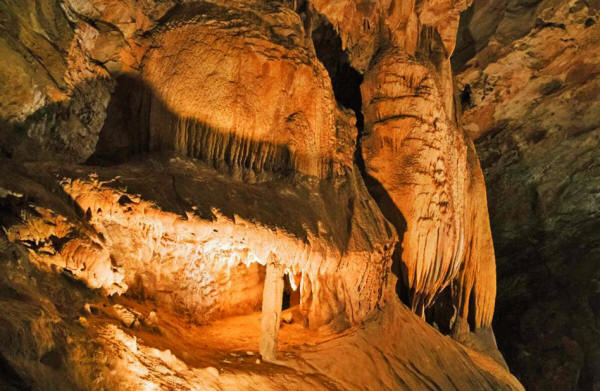|
by Russell Drysdale and Jon Woodhead March 13, 2020 from TheUniversityOfMelbourne Website
NASA
why an ice age ends, we need to know when it ended. Now, new research is working to solve one of the enigmas in palaeoclimatology...
Ice sheets, several kilometers thick, once covered large parts of North America and Eurasia. Picture: Getty Images
The discovery of ice ages in the recent geological past goes back to the 1700s.
Field scientists from Europe noted huge piles of sediment deposited in valleys and plains around the Alps. These sediments were unusual because they consisted of rock types outcropping tens to hundreds of kilometers away.
Originally attributed to Biblical floods, these deposits could only have reached their final destination on glaciers, which must have been many times larger than their current size.
Since the mid-1800s, scientists have long suspected that changes in the geometry of Earth's orbit are responsible for the coming and going of ice ages.
But there has been ongoing uncertainty over which orbital property is most important.
The two main candidates are the subtle increases in the tilt of the Earth's axis (called obliquity) and the rotational changes that govern which part of the year that the Earth is closest to the Sun (precession).
This was elegantly formulated into the 'astronomical theory of the ice ages' in the first decades of the 1900s by Milutin Milankovitch, a Serbian mathematician and engineer.
Field scientists from Europe noted piles of sediment deposited in valleys and plains around the Alps. Picture: Getty Images
He argued that terminations - when the great ice sheets melt - occur during times of increased summer insolation in the latitudes where ice sheets grow.
But proving this theory was problematic at the time:
Support for astronomical theory finally came in the 1960s and 1970s.
Oceanographers and geochemists studying sediment cores drilled from the sea floor revealed that the Earth had experienced dozens of glaciations during the recent past.
Each glaciation interval was separated by a brief, warm 'interglacial', like today...
Measurements of oxygen isotope ratios in tiny fossil organisms (called foraminfera or forams), that build calcareous shells from sea water, showed that, as glaciations come and go, the changes in global ice volume alter the oxygen isotope ratio of sea water.
All of this is recorded by the forams. The glacial-interglacial cycles were subsequently shown to occur at periodicities similar to changes in Earth's orbital geometry.
An intriguing feature of these early ocean-sediment studies was the change in the magnitude and duration of ice ages before and after about one million years ago.
Forams build calcareous shells from sea water allowing the measurement of oxygen isotope ratios. Picture: Supplied
Shorter and lower magnitude ice ages occurred about every 40,000 years prior to one million years ago, and longer, deeper cycles characterize the most recent period.
However, determining the exact astronomical mechanisms was still an issue.
The timing of orbital variations is known with great precision, but it is hard to determine the age profile of ocean cores at these time scales. This is important because in order to know why ice ages come to an end we need to know when they ended.
In a study (Persistent influence of obliquity on ice age terminations since the Middle Pleistocene transition) published in the journal Science, our international team has moved a step closer towards resolving this problem.
Using the latest techniques in radiometric dating, we determined the age of two terminations that occurred about 960,000 and 875,000 years ago.
The ages suggest that the initiation of both terminations is more consistent with increased summer energy from the Sun over the ice sheets, which is caused by an increase in the angle of Earth's tilt
Both terminations then progressed to completion as these high summer energy levels continued.
A comparison of these findings with existing data from nine younger terminations shows this pattern has persisted for the last million years. To carry out our work, we combined data from Italian stalagmites with information from ocean sediments drilled off the coast of Portugal.
Ocean sediments best record the progression of ice-sheet collapse during a termination.
The stalagmites in Corchia Cave preserve some of the geochemical signatures present in the ocean sediments. Picture: Shutterstock
The stalagmites we studied, collected from the Corchia Cave in the Apuan Alps, preserve some of the geochemical signatures present in the ocean sediments, enabling us to match the cave and ocean records.
These stalagmites also contain tiny amounts of uranium and lead, which can then be used to date that information.
Since the stalagmites and ocean sediments are recording the same signal, this means we can apply the stalagmite's uranium-lead chronology to the ocean record, and date the terminations.
This is something that has never been done before over this time scale.
Our colleague and co-author, University of Cambridge marine geologist David Hodell, spent years compiling the ocean sediment data. Professor Hodell produced very detailed time series of the oceanographic changes associated with the two terminations.
Applying the stalagmite chronology to the ocean sediment record for the same period meant the climate information from the ocean sediments could be compared more reliably to the orbital data.
Over the last million years, some terminations were completed within a few thousand years, whereas others dragged on for well over 10,000 years.
Until now, the reason why has been elusive.
Shorter and lower magnitude ice ages occurred about every 40,000 years prior to one million years ago. Picture: Getty Images
Our research (Persistent influence of obliquity on ice age...) has also found that the time it takes for a termination to finish depends on the summer energy levels over the ice sheets at the time the transition begins.
The higher the summer energy levels when the termination is triggered, the more rapid the collapse of the ice sheets.
Our team now plans to explore whether the patterns over the last million years can be traced even further back in time; particularly, the crucial interval called the Middle Pleistocene Transition (MPT), when the average length of ice-age cycles changed from 40,000 years to about 100,000 years.
The MPT is one of the great enigmas in palaeoclimatology, and this future work could help unlock its secrets.
While we have so much more to learn about Earth's ice ages, our work gives us a glimpse into when and why these great ice sheets collapse.
|







